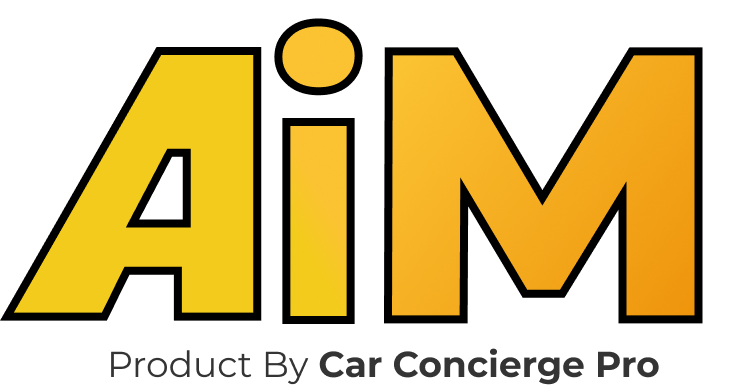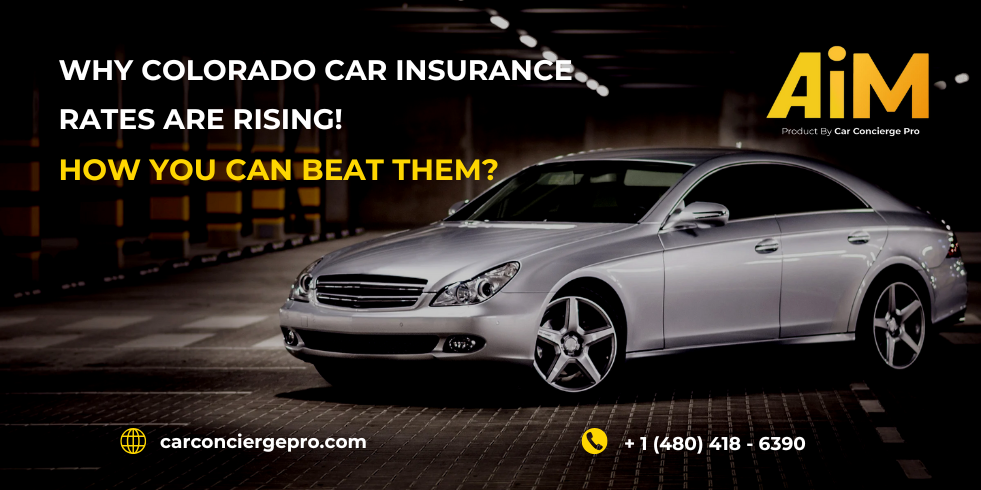Shopping for car insurance can feel overwhelming, especially with so many providers, coverage options, and price points to consider. Whether looking for better coverage or trying to cut costs, finding affordable car insurance quotes doesn’t have to be a hassle. With the right strategies and tools, you can secure the best rates quickly and efficiently.
In this comprehensive guide, we’ll break down the steps to finding affordable car insurance quotes, explain the factors influencing your rates, and show you how Car Concierge Pro and AiM (Auto Insurance Monitoring) can simplify the process while maximizing your savings.
Table of Contents
Why Comparing Car Insurance Quotes is Essential
Car insurance rates vary widely based on factors like your driving record, vehicle type, and even your location. Comparing quotes from multiple providers ensures you’re not overpaying for coverage. Below, we explore why shopping around for car insurance is crucial and how it can lead to significant savings.
1. Uncover Hidden Savings
Each insurance provider has its own pricing formula, meaning rates for the same coverage can differ dramatically. By comparing multiple quotes, you may find substantial cost savings.
- A study by the Insurance Information Institute (III) found that drivers who compare quotes annually save an average of $500 per year.
- Some insurers weigh factors like credit score or driving history differently, which could mean a 30% price difference between companies.
Use online comparison tools to check rates from at least three to five different insurers before making a decision.
2. Customize Your Coverage
Comparing quotes helps you find a policy that aligns with your needs. Some drivers may require only basic liability, while others need full coverage with added protections.
- Basic Liability Coverage: Meets state minimums but may leave gaps in protection.
- Comprehensive & Collision Coverage: Protects against theft, weather damage, and accidents.
- Roadside Assistance & Rental Reimbursement: Additional options for peace of mind.
Example: If you drive a newer vehicle, full coverage may be necessary. However, an older car may only require liability insurance, which can reduce your premium by 40% or more.
3. Avoid Overpaying for Insurance
Without comparing quotes, you might stick with a provider that charges significantly more than competitors for the same level of coverage.
Case Study: A driver in New York with a clean record received quotes from multiple insurers:
- Company A: $2,200 per year
- Company B: $1,650 per year
- Company C: $1,400 per year
By switching from Company A to Company C, the driver saved $800 annually while maintaining the same coverage
Even if you’re satisfied with your current insurer, comparing quotes every 6 to 12 months ensures you’re getting the best rate.
4. Take Advantage of Discounts
Many insurers offer discounts, but they vary between companies. Shopping around ensures you get the best deal.
Common Discounts:
- Good Driver Discount: Up to 30% off for accident-free drivers.
- Bundling Policies: Save 10% to 25% by combining auto and home insurance.
- Low Mileage Discount: For drivers who log fewer miles annually.
Example: A driver in Denver saved 15% by switching to an insurer that offered a telematics-based safe driving program.
5. Consider Usage-Based Insurance (UBI) Options
Many insurers now offer telematics programs that adjust premiums based on driving behavior.
Popular UBI Programs:
- Progressive’s Snapshot: Discounts of up to 30% for safe driving habits.
- State Farm’s Drive Safe & Save: Reduces rates based on annual mileage and driving habits.
- Allstate’s Drivewise: Provides cashback rewards for safe drivers.
According to a J.D. Power study, drivers who enroll in UBI programs can save 15% to 25% on their annual premiums.
6. Understand Rate Fluctuations
Car insurance rates change frequently due to economic conditions, new competitors entering the market, and changes in insurer risk models. Comparing quotes helps you stay ahead of premium increases.
Example:
- The average car insurance premium increased by 8% in 2023 due to inflation and rising repair costs.
- Some insurers increased rates by 10% or more, while others remained stable.
If your premium increases significantly at renewal, shop around to find a better rate.
7. Protect Against Unfair Rate Hikes
Insurers sometimes raise premiums even if you haven’t filed a claim. If you don’t compare quotes, you may unknowingly overpay.
How to Spot Unfair Increases:
- Compare your renewal notice to last year’s premium.
- Check competitor quotes to see if your new rate is still competitive.
- Ask your current insurer for a discount or policy review.
Some insurers offer loyalty discounts, but staying with the same provider isn’t always cost-effective.
8. Leverage Competitive Pricing to Negotiate
When you receive multiple quotes, you can use them to negotiate with your current insurer for a better rate.
Example: A driver in Texas found a lower quote with a competing insurer and asked their current provider to match it. The insurer offered a $200 discount to keep the customer.
Call your insurer and mention lower quotes from competitors—they may be willing to adjust your rate.
9. Compare Insurers’ Customer Service Ratings
Price isn’t the only factor to consider when choosing an insurer. Customer service, claims processing, and financial stability matter as well.
Top-Rated Insurance Companies for 2024:
- Best Overall: State Farm (high customer satisfaction, strong financial backing)
- Best for Discounts: GEICO (multiple discount opportunities)
- Best for Customer Service: USAA (highest-rated for military families)
Check insurer ratings from J.D. Power, AM Best, and the Better Business Bureau before making a switch.
10. Understand Policy Terms Before Switching
While lower rates are appealing, ensure you’re not sacrificing essential coverage. Review:
- Deductibles: Higher deductibles lower premiums but increase out-of-pocket costs.
- Coverage Limits: Make sure the new policy meets or exceeds state requirements.
- Exclusions: Some policies may exclude certain drivers or vehicle uses.
Always read the fine print before switching insurers to avoid unexpected coverage gaps.
By comparing car insurance quotes regularly, you can uncover hidden savings, customize your coverage, and avoid overpaying. With insurance rates fluctuating based on market conditions and personal factors, staying proactive can result in significant financial benefits.
Get at least three quotes before purchasing or renewing a policy. Consider UBI programs if you drive safely and want additional savings. Check for new discounts at each renewal period. Negotiate with your current insurer if you find a lower rate elsewhere.
By following these steps, you can ensure you’re getting the best possible car insurance rates while maintaining the coverage you need.
How to Get Car Insurance Quotes in Minutes
Gone are the days of making endless phone calls or filling out multiple forms. Follow these simple steps to get affordable car insurance quotes quickly:
1. Gather Your Information
Having the following details handy will speed up the process:
- Driver’s license number(s) for all drivers on the policy.
- Vehicle Identification Number (VIN) for your car(s).
- Current coverage details (if applicable).
- Your annual mileage and commuting habits.
2. Decide on Coverage Needs
Determine whether you need liability-only coverage or additional protection, such as:
- Collision: Covers repairs to your car after an accident.
- Comprehensive: Protects against non-collision damages (e.g., theft, hail).
- Uninsured/Underinsured Motorist: Covers you if another driver doesn’t have adequate insurance.
3. Compare Quotes Online
Many providers offer free tools to get car insurance quotes online. While convenient, manually comparing rates can be time-consuming.
4. Review Discounts
Look for discounts you might qualify for, such as:
- Multi-car or bundling discounts.
- Good driver discounts for maintaining a clean record.
- Low-mileage discounts for drivers who don’t use their cars often.
5. Ask About Flexible Payment Options
Some providers offer discounts for paying annually instead of monthly or setting up automatic payments.
Factors That Influence Your Car Insurance Quotes
Car insurance premiums are determined by a variety of factors, many of which can be managed to help you secure better rates. Understanding how insurers calculate your quotes can help you make informed decisions and potentially save hundreds of dollars per year. Below, we explore the key elements that influence car insurance pricing and provide data-driven insights to help you navigate the insurance landscape more effectively.
1. Driving History: A Major Pricing Factor
Your driving record is one of the most significant factors influencing your car insurance rates. Insurance companies assess your past behavior to predict your likelihood of filing a claim.
Impact of Driving Violations:
- A single speeding ticket can increase your premium by 20% or more.
- A DUI can lead to a premium hike of 50% to 100%.
- An at-fault accident may increase rates by 30% or more.
Many insurers offer accident forgiveness programs, which prevent your first accident from causing a rate increase.
2. Vehicle Type: The Car You Drive Affects Your Rates
Not all cars are insured at the same price. The make, model, and year of your vehicle significantly impact your insurance costs.
High-Cost Vehicles to Insure:
- Sports cars and luxury vehicles tend to have higher premiums due to their expensive repair costs.
- Cars with high horsepower are more likely to be involved in high-speed accidents, leading to increased risk for insurers.
Affordable Vehicles to Insure:
- Family sedans and compact cars typically have lower insurance rates.
- Vehicles with high safety ratings and anti-theft features often qualify for discounts.
Insuring a Honda Civic costs significantly less than insuring a BMW M3 due to differences in repair costs and accident statistics.
3. Location: Where You Live Matters
Your zip code plays a crucial role in determining your car insurance premiums. Urban areas tend to have higher rates due to increased risks.
Why Urban Areas Have Higher Premiums:
- Higher accident rates due to traffic congestion.
- Increased theft and vandalism risk.
- More uninsured drivers, leading to higher overall costs for insured motorists
- Drivers in New York City pay up to 70% more for insurance than those in rural New York.
- Areas with high car theft rates, like Denver, Los Angeles, and Houston, often have above-average insurance premiums.
If you live in a high-cost area, consider garage parking or installing an anti-theft system to qualify for discounts.
4. Credit Score: A Hidden Pricing Factor
In many states, credit history is used as a predictor of risk. Drivers with higher credit scores often pay lower premiums.
Impact of Credit Score on Insurance Rates:
- Poor credit (below 580) → Can result in 50% higher premiums than those with good credit.
- Good credit (670-739) → Typically leads to standard rates.
- Excellent credit (740+) → Can reduce premiums by 10% to 20%.
States That Don’t Use Credit Scores: California, Hawaii, Massachusetts, and Michigan have banned the use of credit scores in car insurance pricing.
Improving your credit score can lead to significant savings over time.
5. Coverage Limits and Deductibles: Balancing Protection and Costs
Choosing higher coverage limits provides better financial protection but also increases premiums. Finding the right balance between affordability and security is key.
Coverage Considerations:
- Liability Coverage: Required in most states; increasing limits can raise costs.
- Comprehensive & Collision Coverage: Protects against damage to your own car but adds to your premium.
- Uninsured/Underinsured Motorist Coverage: Essential in areas with high numbers of uninsured drivers.
Example: Raising your liability coverage from state minimums to 100/300/50 (100k per person, 300k per accident, 50k property damage) can increase premiums by 20%, but it provides significantly better financial protection.
Raising your deductible from $500 to $1,000 can lower your premium by 10% to 20%
6. Age and Gender: Young Drivers Pay More
Younger drivers, especially those under 25, typically face higher insurance rates due to their higher likelihood of accidents.
- 16- to 19-year-olds pay an average of $3,500 to $5,000 annually.
- Drivers in their 30s pay around $1,200 to $1,800 per year.
- Gender Impact: Young male drivers generally have higher premiums than young female drivers.
Ways to Reduce Young Driver Premiums:
- Good student discounts (10% to 25% savings).
- Defensive driving courses (5% to 15% savings).
- Being added to a family policy (cheaper than an individual policy).
7. Annual Mileage: The Less You Drive, the Less You Pay
Drivers who put fewer miles on their vehicles typically qualify for lower insurance rates.
Example:
- Below 7,500 miles/year → Can reduce rates by 5% to 10%.
- Above 15,000 miles/year → May result in higher premiums.
If you work from home or primarily use public transit, ask your insurer about low-mileage discounts.
8. Driving Habits: Safe Drivers Save More
Many insurance companies now offer telematics programs that monitor driving behavior and provide personalized discounts.
- Speeding
- Braking patterns
- Time of day driven
Drivers who enroll in programs like Progressive’s Snapshot or State Farm’s Drive Safe & Save can save 10% to 30%.
While some factors affecting your car insurance rates are beyond your control, there are plenty of steps you can take to minimize costs. By maintaining a clean driving record, improving your credit score, choosing the right vehicle, and taking advantage of available discounts, you can significantly reduce your insurance premiums.
Compare multiple insurance providers annually. Take advantage of bundling discounts. Enroll in defensive driving or telematics programs. Adjust your coverage limits and deductibles based on your needs.
By understanding these pricing factors and making strategic decisions, you can secure affordable and comprehensive car insurance coverage that meets your needs.
How to Save Money on Car Insurance Quotes
While finding affordable quotes is the first step, here are some strategies to ensure long-term savings:
1. Bundle Policies
Combine your car insurance with home, renters, or other policies for significant savings.
2. Raise Your Deductible
Opting for a higher deductible can lower your monthly premium. Just make sure you can afford the out-of-pocket cost if you need to file a claim.
3. Maintain a Clean Driving Record
Avoid traffic violations and accidents to keep your rates low.
4. Take Advantage of Discounts
Providers offer various discounts for factors like safe driving, vehicle safety features, and even being a good student.
5. Regularly Review Your Policy
Life changes, like moving to a new location or buying a new car, can impact your rates. Reviewing your policy annually ensures you’re not overpaying.
Conclusion
Finding affordable car insurance quotes doesn’t have to be stressful or time-consuming. With the right approach, tools, and expert support, you can secure a policy that offers great coverage at a price that fits your budget.
Ready to simplify your car search? Let Car Concierge Pro handle the hard work for you. Contact us today to find affordable car insurance quotes in minutes. Don’t forget to ask about our AiM (Auto Insurance Monitoring) service to ensure you’re always saving, year after year.



